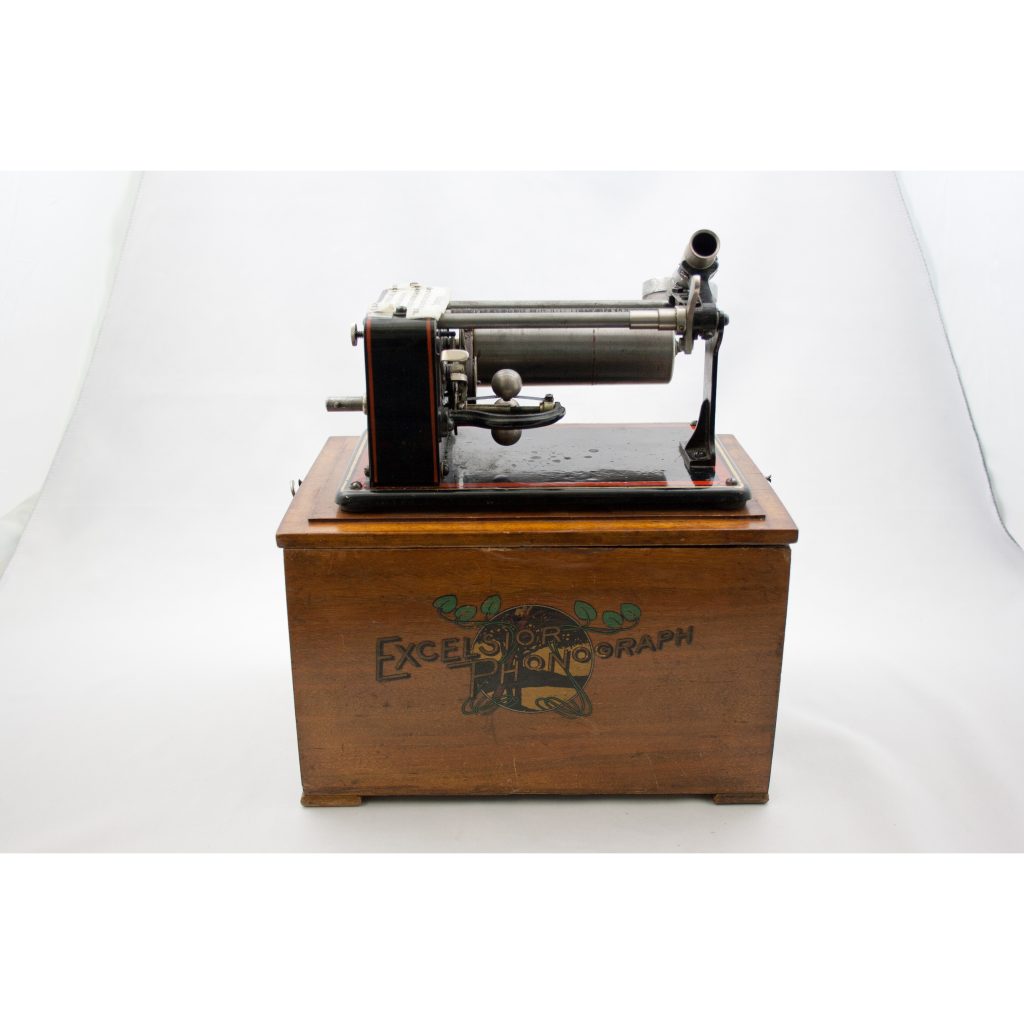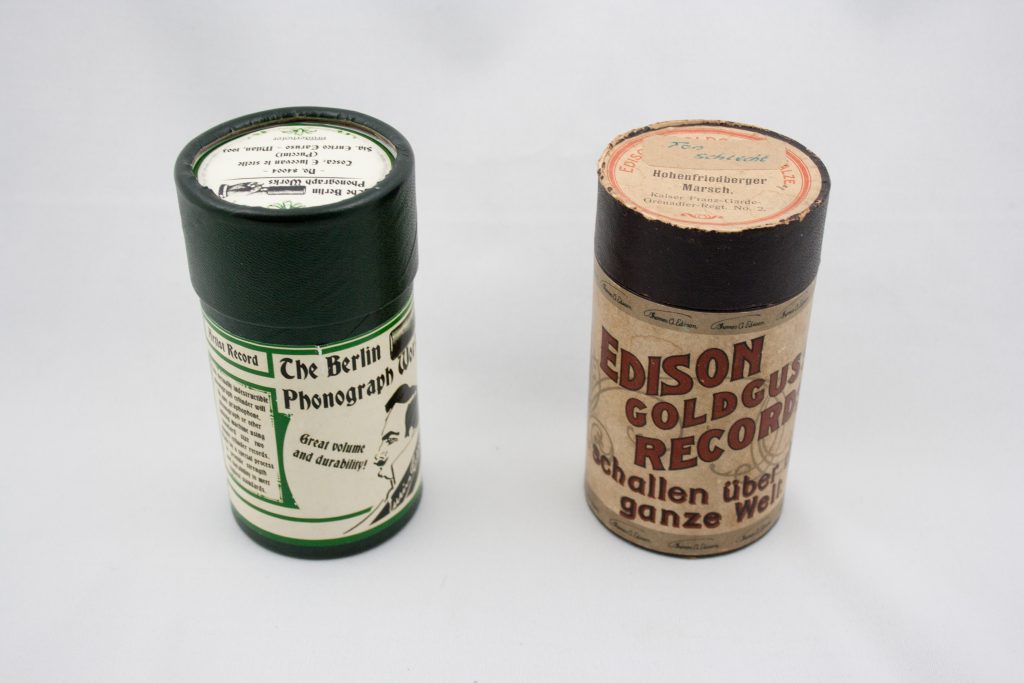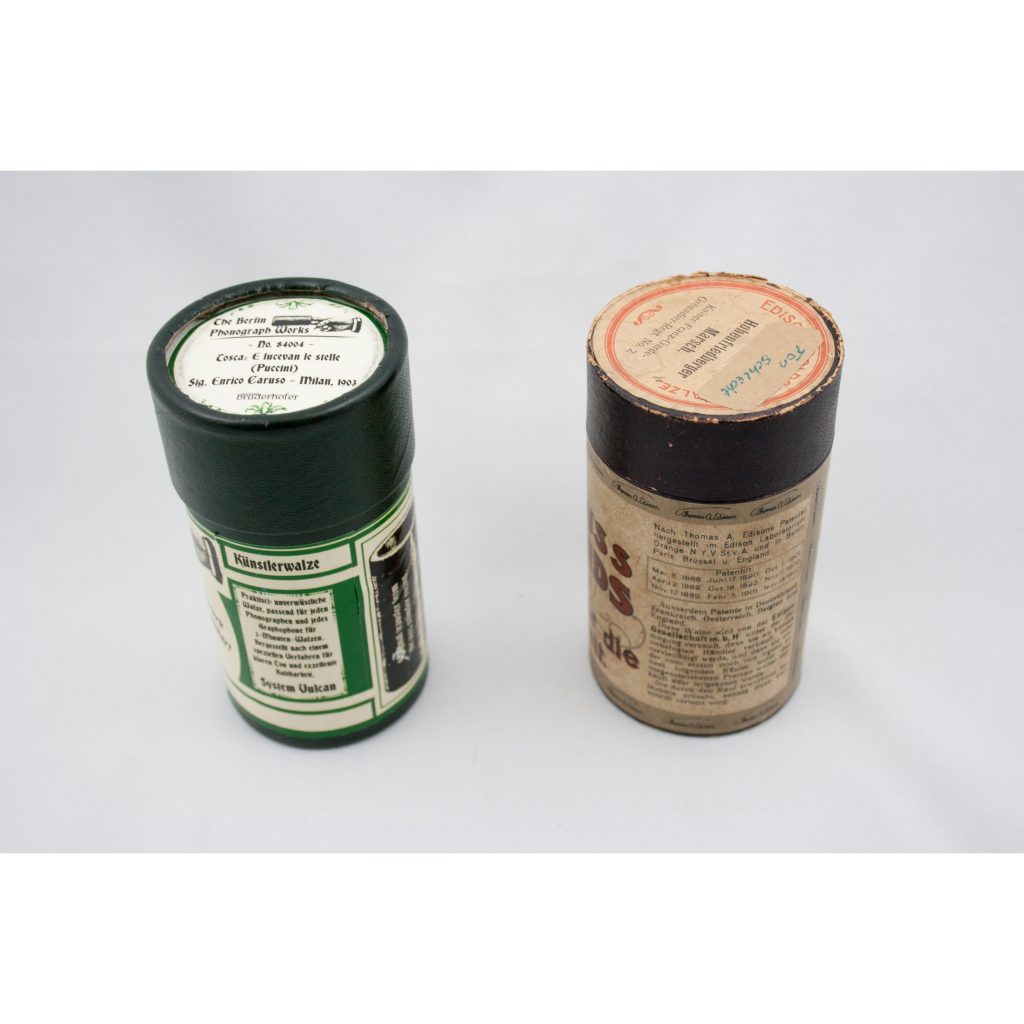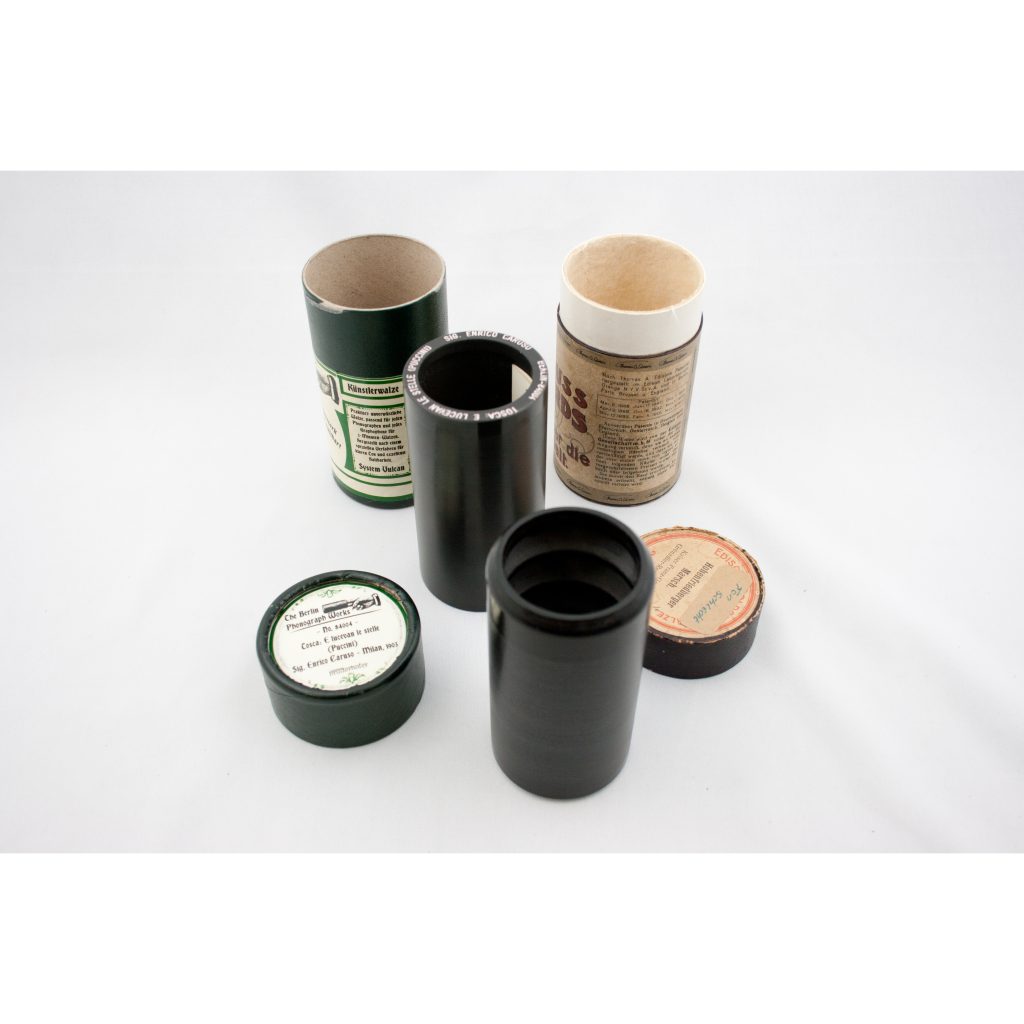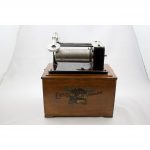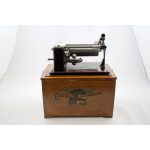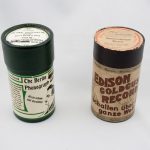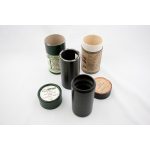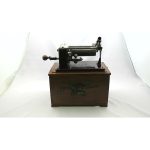Artefacts
Excelsior Phonograph
Excelsior Phonograph
(Accession Number: 0150)
This Excelsior phonograph is a model based on the Edison phonograph and produced by the Excelsiorwerke Cöln factory in Cologne, Germany, between 1903 and 1906. The original Edison phonograph (invented in 1877 by Thomas Alva Edison) is an iconic piece of historical sound technology that is universally associated with the beginning of sound reproduction in the late nineteenth century. It is based on the direct transfer of the vibration of air, caused by a sound source, onto a writing surface, then its playback. During recording, a stylus cuts a spiraling groove into the cylinder. For playback, the needle follows the groove to recreate the original vibrations, though with a certain amount of distortion introduced by the specifics of the apparatus and its recording medium. The idea behind the phonograph materialized throughout the nineteenth century in multiple devices by different inventors, in most cases including attempts to make the vibrations of the air visible on a moving medium. Notably, the phonautograph invented by Édouard-Léon Scott de Martinville in the 1850s was able to record visual traces of sound that were accurate enough to enable the reconstruction of the original sound 150 years later.
The technology of the phonograph has undergone a series of incremental changes. Thus, tin foil was used in early experiments but was then replaced by a wax cylinder; later developments include the use of disks or tape (as in the Tefifon) instead of a cylinder.
© 2015 – 2024 Humboldt-Universität zu Berlin


